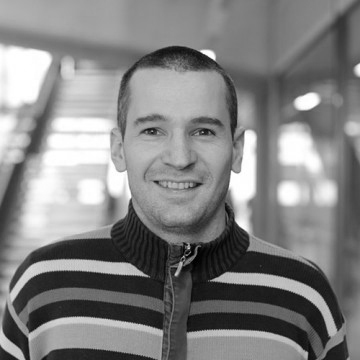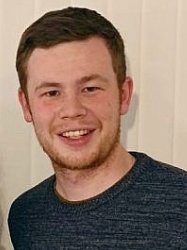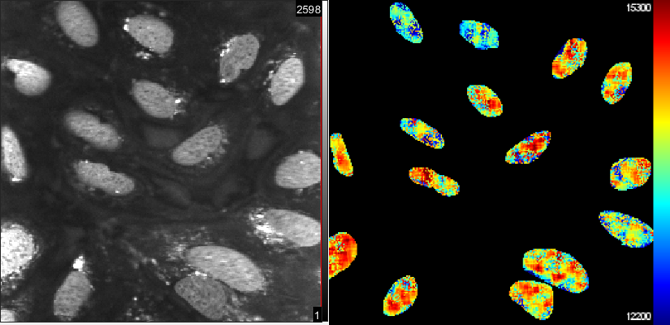By Sophie Arthur
June 20, 2019
Time to read: 5 minutes
Medical research is becoming more and more interdisciplinary. That is two or more teams from different fields coming together to integrate their specialist knowledge, skills and tools to further advance our understanding of a topic or to solve a problem whose solution lays beyond the scope of one individual team.
Here at the MRC LMS, we have several successful interdisciplinary projects happening, but today we want to highlight the collaboration between Jean-Baptiste (JB) Vannier, Head of the Telomere Replication and Stability group at the MRC LMS, and Ramon Vilar and Marina Kuimova of the Department of Chemistry at Imperial College London ahead of our LMS-Chemistry Mixer event on 24 June.
One of the research topics of the Telomere Replication and Stability group aims to understand the regulatory role of DNA structures called a G-quadruplex in telomere biology. Telomeres – the protective caps on the ends of our chromosomes – have implications in aging and the suppression of tumorigenesis, so being able to visualise them in live cells would help with understanding the role of telomeres in these processes. However, there are currently a limited number of techniques you can use to observe them without affecting their function.
JB Vannier discussed how this collaboration started:
“Because there are only two ways currently to visualise telomeres, we wanted to find an alternative that is less disruptive and closer to in-vivo ways. Ramon is working on synthesising small molecules to image a DNA structure called a G-quadruplex – which works a little bit like a knot in your DNA. Likewise, Ramon wanted to have more biological analysis of his work. Using these small molecules, we wanted to determine what conditions regulate the number of DNA quadruplexes in cells, and more precisely at telomeres, to see if we can use that knowledge within cancer treatments for example. This led to us putting forward a fellowship for 2 PhD students”.
One of those PhD students is Ben Lewis who discussed his experience working across both institutes:
“There are a few people in Chemistry who try to do some biology work. In fact, my predecessor started to add some biology to their work but encountered a range of challenges that were difficult for chemists alone to tackle. This was when Ramon started to talk to JB and his group who could share insights into telomere biology that we as chemists wouldn’t have known to think about. Their knowledge and facilities have been invaluable and have allowed me to take on a very interdisciplinary projects working through all the phases from synthesising the molecules all the way through to the photo-physics and the biology”.
Discussing the benefits and challenges of an interdisciplinary research collaboration, JB said:
“This collaboration is completely 50:50. We all gain knowledge from each other. We are able to share resources that we would not have been able to access otherwise and made us aware of molecules that chemists would have considered that we might not have, and vice versa. It has allowed me to participate in more diverse research, which without the bridge of a student or postdoc connecting us would have been less efficient. It has allowed us to be more ambitious in what we want to achieve as we have realised there are opportunities that we can do with their expertise, that we didn’t think were possible before”.
Ben added:
“I also wanted to be an interdisciplinary student as I loved the thought of taking an idea from a chemistry lab into a biology lab. The shared knowledge and experience from all my supervisors have been great as a student, if not a little challenging managing the planning from three different disciplines. For example, if I take the same results to each supervisor, they will each give me a different view on how they should be interpreted, but it is useful to have everybody’s input and perspective. It has given me more collaborator opportunities, but also an incredible amount of flexibility as a student to guide whether I want my PhD to consist of more chemistry over biology, or more biology over the synthesis. As a chemist, I would make a probe and publish about it in the hope that someone else has the expertise to carry on the work. Because of this collaboration, I will be able to continue the work and have a higher impact on the development of that probe because of the joint experience and expertise I have been exposed to”.

JB discussed the future opportunities of this collaboration:
“I hope to push this collaboration further in the future and develop new areas of interest. One of those that I would like to pursue is understanding telomere phase transition within the nucleus of a cell – how that compartment that houses our DNA can go from more of a liquid state and become more viscose at times and how it affects factors present at telomeres. We hope to have a new student in the future too and build a deeper understanding of how physical modifications inside cells can impact their biology”.
On 24 June, chemists from Imperial College London’s Department of Chemistry and some of our researchers at the MRC LMS will gather for the inaugural LMS-Chemistry mixer event. This event will be a series of short talks for researchers to share snapshots of their research interests and current challenges in the hope to highlight potential areas for collaboration. Especially, given that the Department of Chemistry have moved to their new home on the White City Campus in the near vicinity of the LMS. We hope this event will inspire many more successful collaborations like the one we have highlighted in this article.